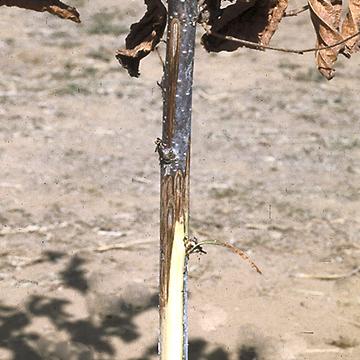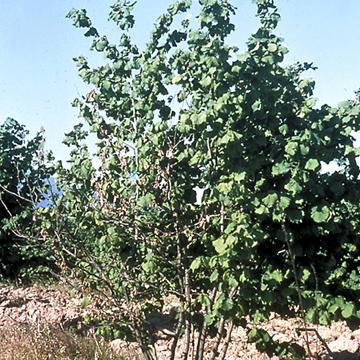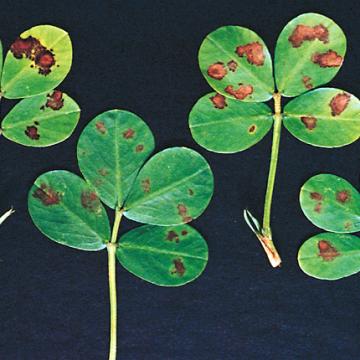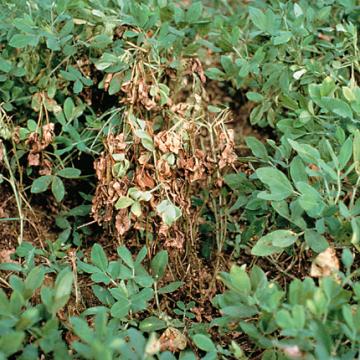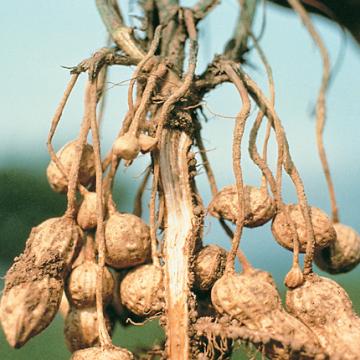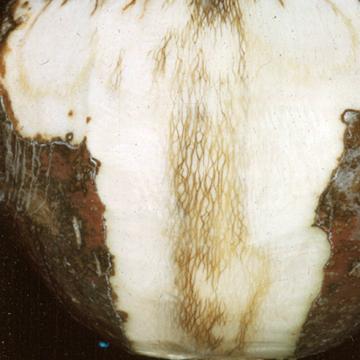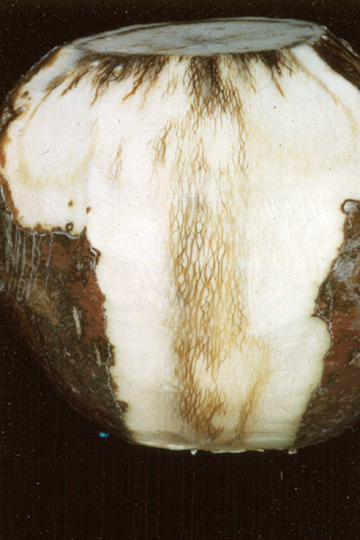DISEASE: Bacterial blight
HOST: Hazelnut
Diseased young tree with discoloration of the cambium. Dieback of young twigs and branches is characteristic. Other typical symptoms are bud and twig necrosis and small, angular or round, water-soaked leaf spots.
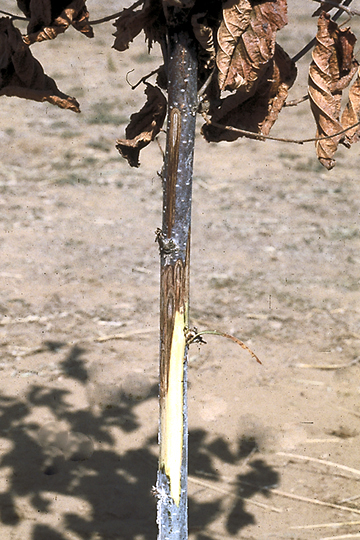
Bacterial blight | Hazelnut
DISEASE: Bacterial blight
HOST: Hazelnut (Corylus americana)
PATHOGEN: Xanthomonas arboricola pv. corylina
SOURCE: J. Pscheidt
DISEASE: Bacterial canker
HOST: Hazelnut
Primary symptoms are failure of buds to break and withering and death of new foliage in spring. Dead leaves remain attached to limbs after normal leaf fall.
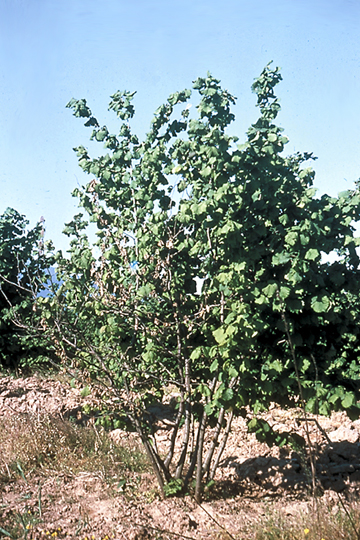
Bacterial canker | Hazelnut
DISEASE: Bacterial canker
HOST: Hazelnut (Corylus americana)
PATHOGEN: Pseudomonas syringae pv. avellanae
PATHOGEN SYNONYM: Pseudomonas avellanae
SOURCE: P. Psalidas
DISEASE: Bacterial leaf spot
HOST: Peanut
The disease causes water-soaked lesions, particularly on upper leaf surfaces. Lesions enlarge and later display brown necrotic areas. Leaflets become chlorotic and shed prematurely.
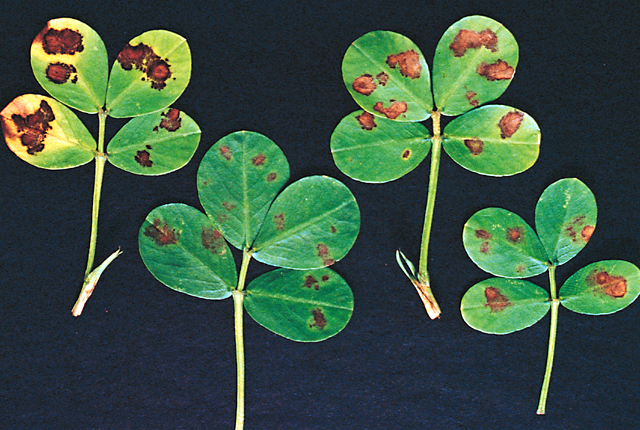
Bacterial leaf spot | Peanut
DISEASE: Bacterial leaf spot
HOST: Peanut (Arachis hypogaea)
PATHOGEN: Pseudomonas sp.
SOURCE: P. Subrahmanyam
DISEASE: Bacterial wilt
HOST: Peanut
First sign of disease is slight drooping or curling of leaves. As the plant declines, foliage turns yellow, followed by wilt and death of stems.
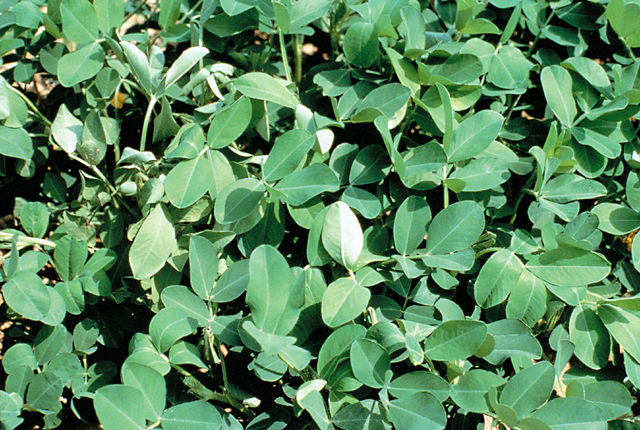
Bacterial wilt | Peanut
DISEASE: Bacterial wilt
HOST: Peanut (Arachis hypogaea)
PATHOGEN: Ralstonia solanacearum
PATHOGEN SYNONYM: Pseudomonas solanacearum
SOURCE: D. Porter
DISEASE: Bacterial wilt
HOST: Peanut
Advanced stage of disease with death of plants.
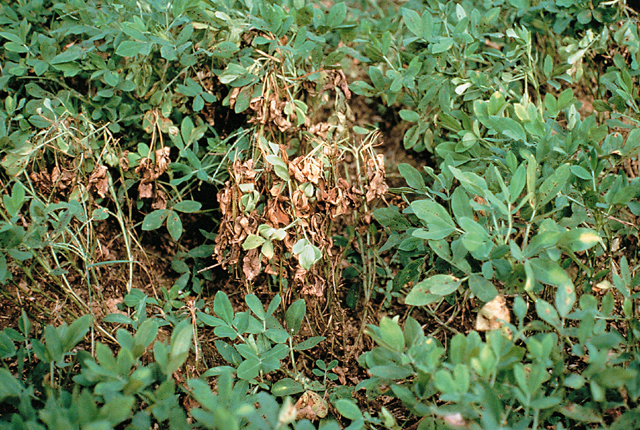
Bacterial wilt | Peanut
DISEASE: Bacterial wilt
HOST: Peanut (Arachis hypogaea)
PATHOGEN: Ralstonia solanacearum
PATHOGEN SYNONYM: Pseudomonas solanacearum
SOURCE: D. Porter
DISEASE: Bacterial wilt
HOST: Peanut
Vascular discoloration of taproot.
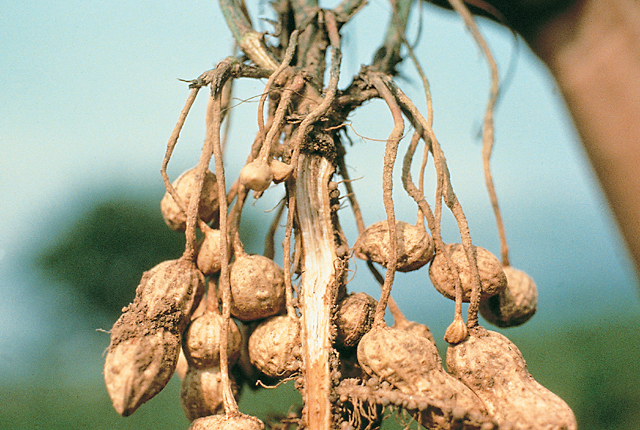
Bacterial wilt | Peanut
DISEASE: Bacterial wilt
HOST: Peanut (Arachis hypogaea)
PATHOGEN: Ralstonia solanacearum
PATHOGEN SYNONYM: Pseudomonas solanacearum
SOURCE: APS


